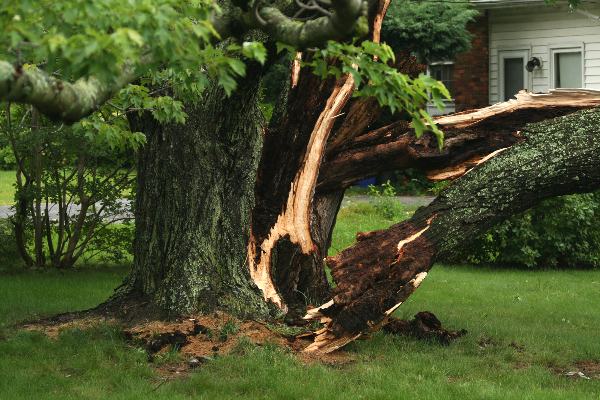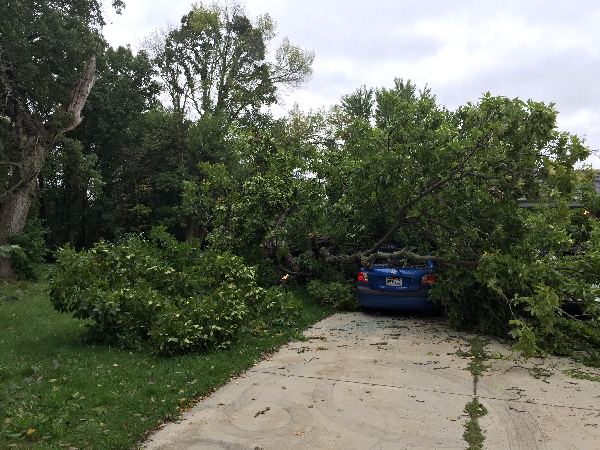
When strong winds during a stormhit a tree, the trunk and branches sway and bend. This constant movement weakens the tree, making it more likely to break. Heavy rain and high winds can erode the soil around the base of the tree, exposing roots or even uprooting the tree itself. Leaves can be stripped from the crown of the tree itself, exposing the tree to pests and reducing its ability to create energy.
With summer comes summer storms, and lots of opportunities for storm damage on trees. Strong healthy trees are more likely to withstand any damage- providing proper care during the summer sets the stage for a healthy canopy throughout the year.
Proper pruning promotes healthy growth patterns and strengthens the tree’s structure. Remove dead or diseased branches to improve air circulation and reduce the risk of disease. Inspect trees for signs of winter damage, such as cracked bark or broken branches. Proper pruning can address these issues and prevent breakage during storms.
Regularly inspect your trees for signs of pests such as aphids, caterpillars, or borers. Early detection allows for prompt treatment. If you are unsure, contact an arborist for an inspection.
Apply a layer of mulch around the base of your trees. Mulch helps retain moisture, suppress weeds, and insulate roots from temperature fluctuations. For young or fragile trees, provide wind protection with burlap screens or sturdy stakes. This prevents damage from strong winds.


Q: How can I tell if my tree has a pest infestation?
A: Look for signs such as unusual leaf damage, sticky sap, or insects on the leaves or bark.
Q: Can mulch be too thick around trees?
A: Yes, avoid piling mulch against the tree trunk, as it can lead to moisture retention and rot.
Q: Can a tree heal from storm damage?
A: While many trees can recover from storm damage, severe breaks, lightning strikes, or uprooting may be irreparable. Assessing the extent of damage is crucial in determining if the tree needs to be removed.
Storms can wreak havoc on trees, causing damage to trunks, branches, and roots. Inspect your trees regularly for signs of winter damage, such as cracked bark or broken branches. Early detection is key to preventing further harm.
Regularly inspect your trees for signs of pests, such as aphids, caterpillars, or borers. Mulching around the base of the tree can help retain moisture, suppress weeds, and insulate roots from temperature fluctuations. For young or fragile trees, provide wind protection with burlap screens or sturdy stakes.